Dean Acoustic Guitar – Partial Re-Fret
South Austin Guitar Repair
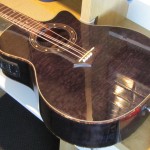 |
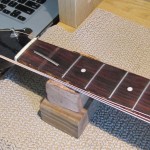 |
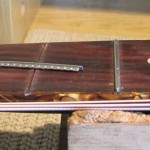 |
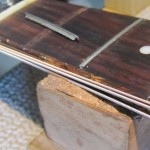 |
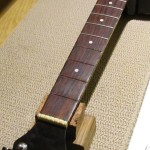 |
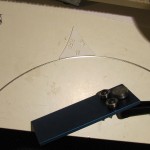 |
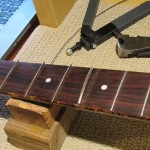 |
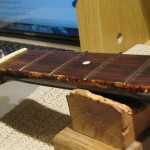 |
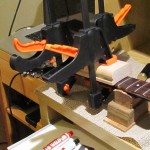 |
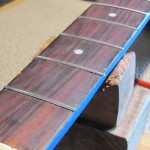 |
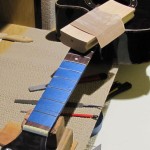 |
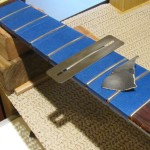 |
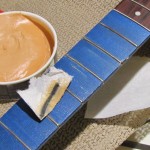 |
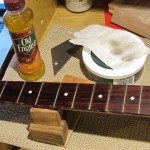 |
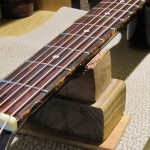 |
Wow, it’s almost been a month since I’ve had time to blog about Austin guitar repairs. Despite the summer rush for repairs being over, the rush itself seems to continue on. I guess it’s a good problem to have?
So, down to the nitty gritty.
After many years of love and play time, the owner of this guitar made an honest attempt to re-fret the first four frets on his own. Unfortunately for his efforts, murphy’s law is especially true when doing any kind of work on your frets. So after his replaced frets completely fret themselves out, he brought it in to my shop for a fix.
The main issue, was the frets were not a good replacement size (too short in crown height) and I couldn’t simply mill them down to match the others. In this case, it was faster and easier to replace them entirely.
First the frets needed to be pulled. The customer didn’t use any glue, so they were only being held in by the teng of the fret. Once they were out, I cleaned out the inside of the fret slots for any debris.
Next, I use a gauge to determine what radius the fingerboard has been manufactured. This guitar was 10″. To translate, imagine a 10″ diameter circle; the top of that circle is the shape of this guitar’s fingerboard, which the frets are placed.
Using my handy fret bender, I fed the fret wire through and cut sections to place on the neck. Because this fingerboard had binding on its sides, I also needed to undercut the ten on the ends so it could sit flush on the fingerboard.
After applying a bit of glue to the bottom of the frets, I hammered them into their slots using a brass-tipped hammer. Once they were in, I clamped them down with a radius block that matched the fingerboard’s profile.
After a night of the glue curing, I removed the clamp and beveled the edges of the frets for any sharp corners. Using that same radius block and a bit of 150 and 220 sand paper, I leveled any imperfections in the new frets and it’s older neighboring ones. Then, using some wet/dry sandpaper, I gave them each a “once over” to smooth them further.
Next, I polished each one with a bit of rubbing compound to buff out any additional scratches. After removing the masking tape from the fingerboard, I apply a few dabs of lemon oil to coat and enrich the rosewood fingerboard
Once that’s dried, I string out the guitar and it’s back in action! Fret work, to say the least, is a series of steps. But when performed correctly, bring a tired, worn guitar, back to life.
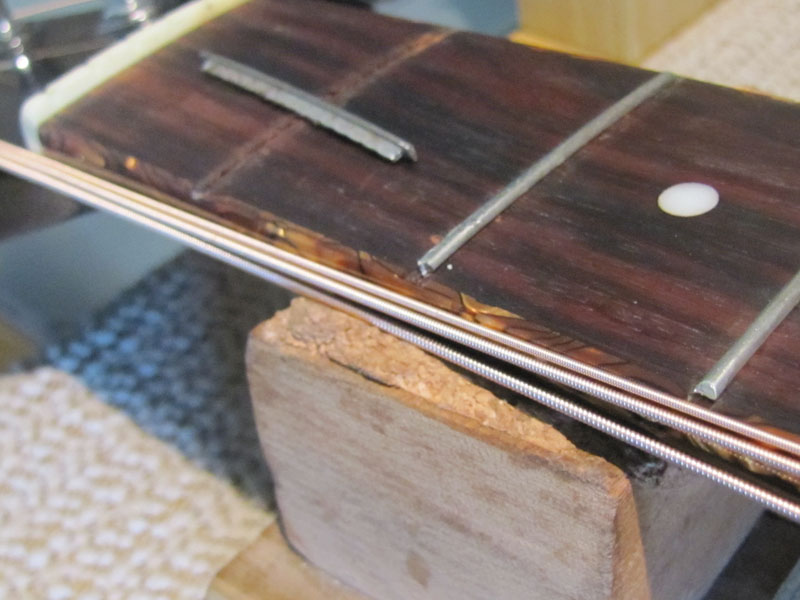
[…] Then, I took 2 grades of sandpaper to get the nasty file and rasp marks out of the fingerboard and make it nice and smooth. I applied a few layers of clear lacquer to seal the deal and wet-dry sanded in between coats. I then lightly sanded the frets to get the unwanted lacquer off and applied some rubbing compound just the same as I do when refretting a guitar. […]
Photo no. 10 nasty chip at the 2nd fret… pity